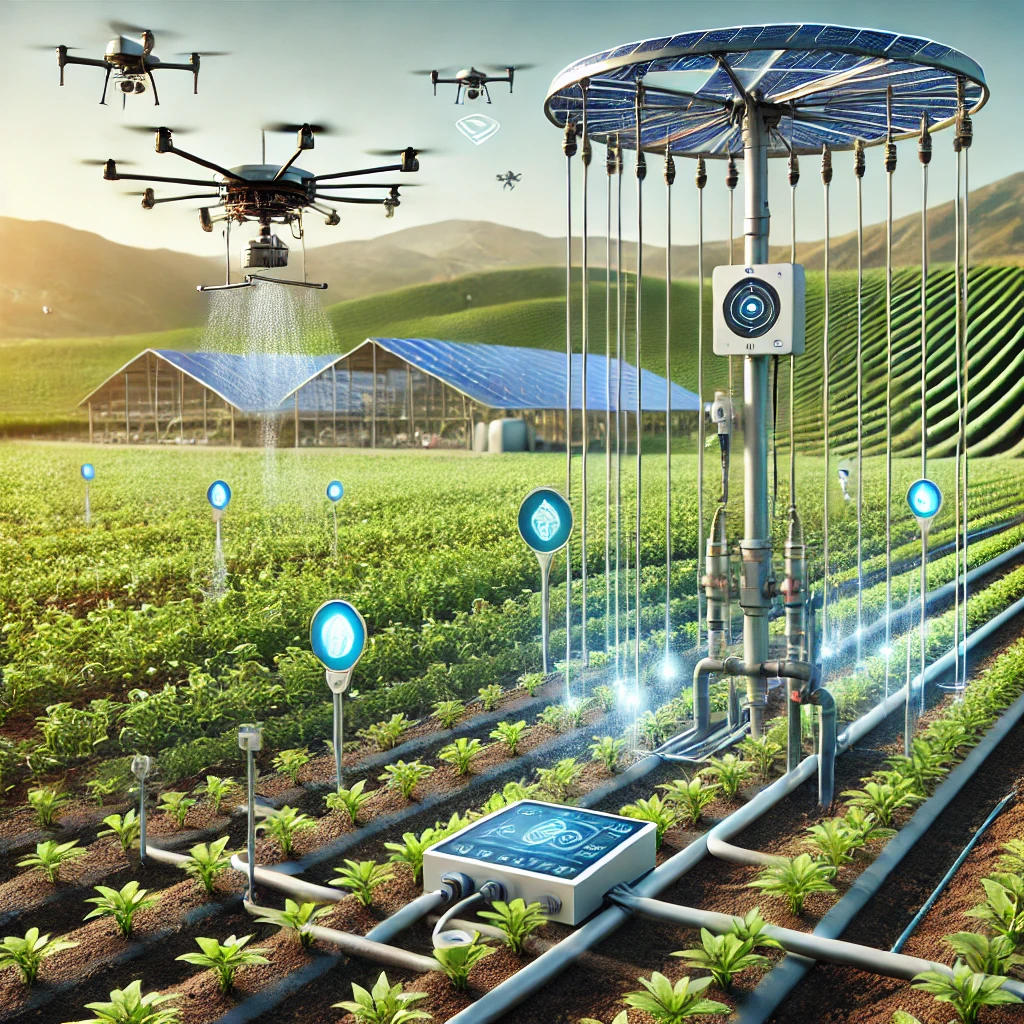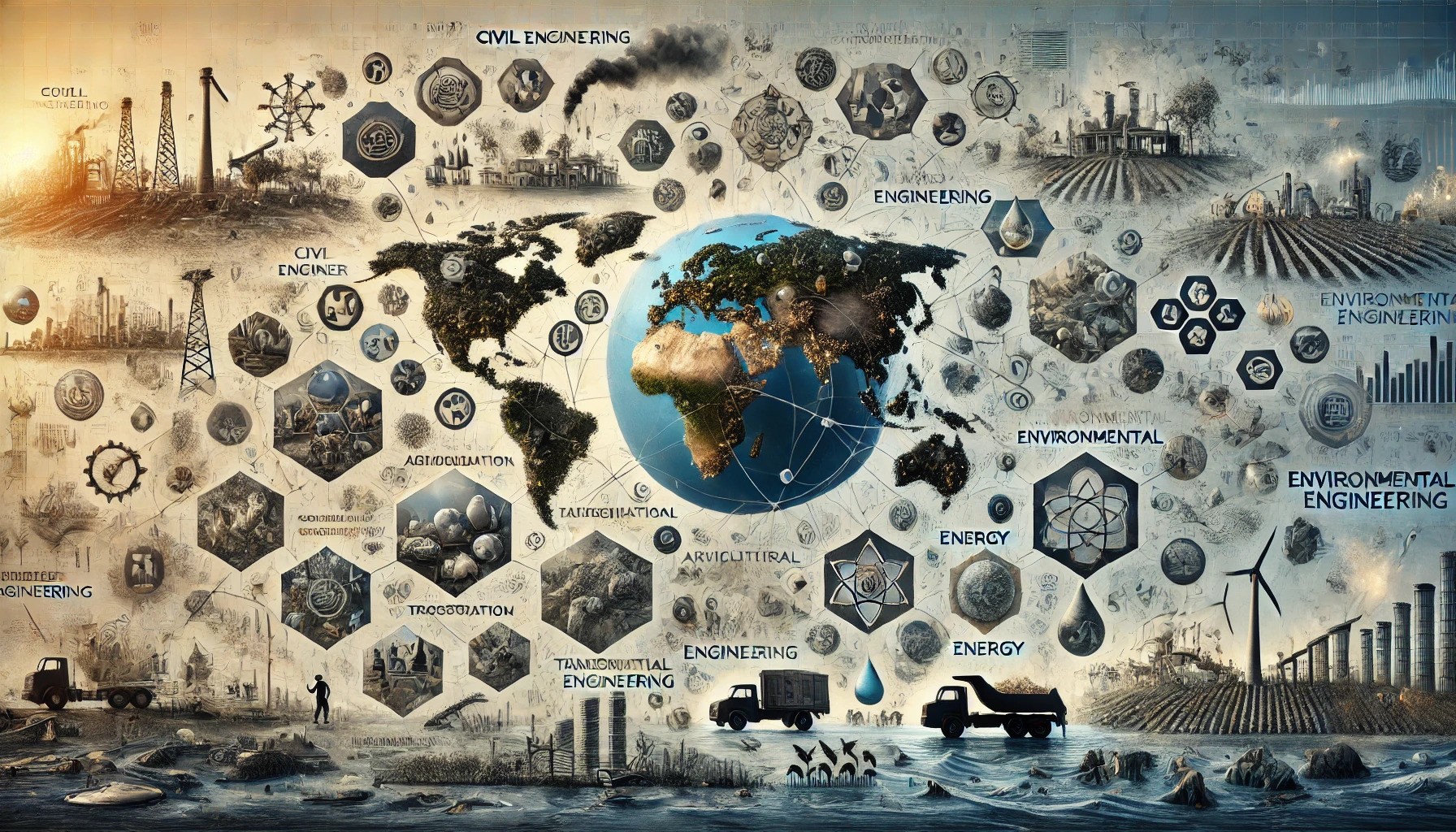User Ideas / Prospects
Notable Asian agricultural engineers, scientists, and innovators who have made remarkable contributions to agricultural development in Asia. Their work has improved food security, introduced new technologies, and empowered smallholder farmers, contributing to the transformation of agriculture across the continent.
Key Asian Agricultural Engineers, Scientists, and Innovators

- Contribution: Known as the "Father of Hybrid Rice," Yuan Longping developed the first high-yielding hybrid rice varieties, which significantly increased rice production and helped alleviate hunger in China and other Asian countries.
- Impact: His innovations in hybrid rice have been adopted worldwide, helping feed billions of people.
- Famous Quote: "To make a greater contribution to mankind, we should not only meet the needs of China but also help feed the world."

- Contribution: Known as the "Father of the Green Revolution" in India, Swaminathan introduced high-yielding varieties of wheat and rice that helped India achieve self-sufficiency in food production during the 1960s and 70s.
- Impact: His work prevented famines in India and significantly improved the country’s food security.
- Famous Quote: "If agriculture goes wrong, nothing else will have a chance to go right."
3. William Dar (1953–Present) – Philippines
- Contribution: Dar is a leading agricultural scientist and former Secretary of Agriculture in the Philippines. He has been instrumental in promoting sustainable farming practices and crop diversification in Asia.
- Impact: His work at the International Crops Research Institute for the Semi-Arid Tropics (ICRISAT) has improved food security in drought-prone areas through innovations in crop production and soil management.
- Famous Quote: "Agriculture must be resilient, sustainable, and inclusive to tackle the challenges of climate change and food security."

- Contribution: An agricultural economist, Hossain was a champion of rural development and food security in Bangladesh. He worked at the International Rice Research Institute (IRRI) and led efforts to improve rice productivity in Asia.
- Impact: His research helped increase rice yields, reduce hunger, and improve livelihoods for millions of farmers in Asia’s rice-growing regions.
- Famous Quote: "Agricultural research and innovation are the pillars of food security in Asia
5. Sayed Azam-Ali (1956–Present) – Malaysia: A leading researcher on underutilized crops and sustainable agriculture, Azam-Ali focuses on food crops that can improve nutrition and food security in developing nations.
Famous Quote: "We must broaden our food base to ensure food security in the face of climate change and population growth."
Continuing the LegacyThese Asian agricultural engineers, scientists, and innovators have made significant contributions to the development of sustainable agricultural practices, food security, and innovative technologies. Their efforts in biotechnology, soil management, precision farming, and water conservation have improved productivity, empowered smallholder farmers, and ensured the continent’s ability to meet the challenges of feeding a growing population in the face of climate change.
Note this list I did text without any particular order and best of my memory text me if you don't agree any of i mentioned or someone i Missed.
list of notable African agricultural engineers, scientists, and innovators whose contributions have been crucial in transforming the agricultural landscape of the continent, improving food security, and combating hunger. These individuals have introduced innovations and policies that have had a lasting impact on African agriculture, empowering farmers and ensuring sustainable development.
Key African Agricultural Engineers, Scientists, and Innovators1. Akinwumi Adesina (1960–Present) – Nigeria

- Contribution: As President of the African Development Bank and a former Nigerian Minister of Agriculture, Adesina played a crucial role in driving agricultural transformation across Africa, launching initiatives like the Alliance for a Green Revolution in Africa (AGRA).
- Impact: His efforts have promoted the use of modern farming techniques, fertilizers, and agricultural policies, significantly increasing food security across Africa. He received the World Food Prize in 2017.
- Famous Quote: "The future of Africa’s development depends on agriculture, and agriculture depends on youth."
- Contribution: An agricultural scientist and plant breeder, Ejeta developed drought-resistant and pest-resistant sorghum varieties, critical to ensuring food security in sub-Saharan Africa.
- Impact: His work has been instrumental in improving the productivity of sorghum, a staple food in Africa, and his innovations have benefitted millions of smallholder farmers. He was awarded the World Food Prize in 2009.
- Famous Quote: "Science is a powerful tool to defeat hunger and poverty, but it requires dedication and global cooperation."

- Contribution: A plant pathologist and biotech expert, Wambugu has been a key figure in promoting biotechnology in African agriculture, particularly for smallholder farmers. She led efforts to develop genetically modified (GM) crops that are disease-resistant and higher yielding.
- Impact: Her work has improved food security in Kenya and other parts of Africa by increasing crop resilience to diseases and pests, especially in staple crops like maize.
- Famous Quote: "Biotechnology is not just about science, it’s about feeding the hungry and improving livelihoods."

- Contribution: As former Secretary-General of the United Nations, Annan was a vocal advocate for agricultural development in Africa. He served as the Chairman of the Alliance for a Green Revolution in Africa (AGRA), promoting agricultural reforms and innovation.
- Impact: His leadership at AGRA was key in driving efforts to improve seed quality, agricultural productivity, and farmer support systems across the continent.
- Famous Quote: "The future of Africa’s development depends on transforming its agriculture."

- Contribution: Although born in Israel, Hillel's groundbreaking work in micro-irrigation techniques has had a lasting impact on African agriculture. His irrigation innovations helped regions facing water scarcity optimize water use for agricultural productivity.
- Impact: His techniques have been adopted in arid and semi-arid regions of Africa, contributing to food security in water-scarce environments.
- Famous Quote: "Water and land are the essential ingredients for the survival and prosperity of humanity."

- Contribution: Jones is an agricultural scientist known for developing the New Rice for Africa (NERICA) hybrid, which significantly boosts rice yields and is resistant to drought and disease.
- Impact: His work on rice breeding has improved rice production across Africa, enhancing food security and reducing dependence on imported rice.
- Famous Quote: "Agricultural transformation in Africa is possible with the right technology and the involvement of our farmers."
- Contribution: A renowned nutritionist and agricultural scientist, Oniang'o has worked tirelessly to improve food and nutrition security in Africa. She has been an advocate for women farmers and sustainable agricultural practices.
- Impact: Her research and advocacy have helped improve nutrition policies and practices, leading to healthier communities and more productive agricultural systems in Kenya and across Africa.
- Famous Quote: "The true wealth of a nation lies in the health of its people, which starts with the food they eat."

- Contribution: A prominent scientist and academic, Juma was a leading advocate for the use of science and technology to boost agricultural productivity in Africa. He promoted the use of biotechnology and agricultural innovations to tackle food insecurity.
- Impact: His work on agricultural policy and technological innovation has shaped global and African agricultural strategies, helping to advance the continent’s agricultural development.
- Famous Quote: "Innovation is the engine for growth in Africa’s agriculture."
- Contribution: Though Filipino by nationality, Dar’s work in Africa as Director General of the International Crops Research Institute for the Semi-Arid Tropics (ICRISAT) has had a profound impact on African agriculture. He promoted agricultural research for dryland farming and crop improvement.
- Impact: His research on drought-resistant crops has improved agricultural productivity in semi-arid regions of Africa, helping millions of farmers adapt to climate change.
- Famous Quote: "Research is the key to unlocking the potential of African agriculture."
- Contribution: A former Rwandan Minister of Agriculture and President of AGRA, Kalibata has been a leading figure in advancing agricultural transformation across Africa, focusing on smallholder farmer support and sustainable farming practices.
- Impact: Under her leadership, AGRA has helped millions of African farmers increase their productivity and income through access to better seeds, technologies, and market systems.
- Famous Quote: "Agriculture is at the heart of Africa’s future, and we must invest in it for our people to thrive."

- Contribution: An agricultural scientist and soil expert, Bationo has worked extensively on improving soil fertility and sustainable farming practices in the Sahel region of Africa. His research focuses on soil health and nutrient management.
- Impact: His innovations in soil management have helped restore degraded soils and boost agricultural productivity in some of the most challenging environments in Africa.
- Famous Quote: "Healthy soils are the foundation of a thriving agricultural system."

Joseph DeVries (Present) – Kenya: Founder of the African Seed Access Index, DeVries has worked on improving access to high-quality seeds for smallholder farmers across Africa.
- Famous Quote: "Seeds are the foundation of agriculture, and access to quality seeds is the first step toward food security."
Kendi Mutungi (Present) – Kenya: An agricultural scientist focusing on post-harvest losses and food preservation, Mutungi advocates for improving storage and processing technologies to reduce food waste in Africa.
- Famous Quote: "Reducing post-harvest losses is crucial to ending hunger in Africa."
These African agricultural engineers and scientists have made remarkable contributions to their countries and the continent as a whole, ensuring better food security, productivity, and resilience. Their work in biotechnology, soil management, water conservation, and agricultural policy has provided lasting solutions to the food challenges Africa faces, bringing hope and prosperity to millions of people.
Note this list I did text without any particular order and best of my memory text me if you don't agree any of i mentioned or someone i Missed.
notable Indian agricultural engineers, scientists, and innovators whose contributions have been instrumental in shaping India’s agricultural sector, improving food security, and combating hunger. Their work has helped transform Indian agriculture into a more sustainable, productive, and resilient system.
Key Indian Agricultural Engineers and Innovators1.1. M. S. Swaminathan (1925–2023)

- Contribution: Father of India’s Green Revolution, Swaminathan introduced high-yielding wheat and rice varieties that helped India achieve self-sufficiency in food production during the 1960s and 70s.
- Impact: His efforts in agricultural research and policy saved millions from famine and significantly improved India’s food security.
- Famous Quote: "If agriculture goes wrong, nothing else will have a chance to go right."
- Contribution: Known as the "Father of the White Revolution" in India, Kurien was the architect of Operation Flood, the world’s largest dairy development program.
- Impact: His efforts made India the largest producer of milk in the world, improving rural incomes and nutritional standards.
- Famous Quote: "True development is not the development of land, or of cows; it is the development of men and women."

- Contribution: Known as the "Waterman of India," Singh pioneered water conservation techniques like rainwater harvesting and rejuvenation of rivers in drought-prone areas of Rajasthan.
- Impact: His work has improved water availability for agriculture, transforming barren lands into fertile fields and increasing food security in arid regions.
- Famous Quote: "The key to food security is water security."

- Contribution: A notable agricultural engineer and former director of the Central Institute of Agricultural Engineering, Carr worked on designing agricultural machinery for Indian farmers.
- Impact: His innovations in farm equipment mechanized agriculture, improving productivity and efficiency, particularly for small and marginal farmers.
- Famous Quote: "Farm mechanization is the cornerstone of modern agricultural productivity."
- Contribution: Renowned for his work on farm machinery, Dr. Mehta is a leading agricultural engineer at the Central Institute of Agricultural Engineering, focusing on mechanization for small and marginal farmers.
- Impact: His contributions to agricultural mechanization, including tools and equipment for land preparation and planting, have helped increase efficiency and reduce manual labor.
- Famous Quote: "Mechanization is the key to sustainable agricultural growth."

- Contribution: As the former chairperson of the National Dairy Development Board (NDDB), Patel played a crucial role in continuing India’s dairy revolution and improving rural livelihoods through dairy farming.
- Impact: Her leadership in the cooperative dairy sector has empowered millions of rural farmers, particularly women, in improving their income and nutrition.
- Famous Quote: "Empowering farmers through cooperatives is the path to rural prosperity."

- Contribution: Founder of the Asia-Pacific Association of Agricultural Research Institutions (APAARI) and former Director General of the Indian Council of Agricultural Research (ICAR), Paroda promoted agricultural research and innovation.
- Impact: He led major initiatives in crop improvement and sustainable agriculture in India and across Asia, improving food security through research-driven strategies.
- Famous Quote: "Innovation in agriculture is key to overcoming the challenges of food security and environmental sustainability."

- Contribution: Known for his work in promoting precision agriculture and the use of modern farming technologies, Pathak is an agricultural scientist who advocated for the use of drones, GPS, and data analytics in farming.
- Impact: His efforts in advancing precision agriculture have helped optimize resource use, reduce costs, and increase productivity in India’s farms.
- Famous Quote: "Precision farming holds the key to optimizing agricultural inputs and maximizing yields."

- Contribution: A leading agricultural engineer and academic, Rathore has worked extensively on post-harvest technologies, particularly for improving food processing and reducing waste.
- Impact: His contributions to post-harvest management and processing have helped reduce food losses, improve food quality, and enhance the value chain for farmers.
- Famous Quote: "Reducing post-harvest losses is as important as increasing production in our fight against hunger."

- Contribution: A leading Indian agricultural scientist and former director of the Plant Production and Protection Division at the Food and Agriculture Organization (FAO) of the UN, Pandey contributed to global food security.
- Impact: His work has led to improvements in the resilience of crops to climate change and better farming practices globally, including in India.
- Famous Quote: "The future of agriculture lies in adapting to climate change and ensuring sustainability in food production."
- Ajay Vir Jakhar (Present): Chairman of Bharat Krishak Samaj (Farmers' Forum India), Jakhar is an advocate for sustainable farming and farmer welfare.
- Famous Quote: "Indian agriculture must shift from input-intensive to knowledge-intensive farming."
- Devinder Sharma (Present): A prominent food and trade policy analyst, Sharma advocates for farmer rights and sustainable agricultural policies.
- Famous Quote: "Agriculture must remain the primary driver of rural livelihoods."
These Indian agricultural engineers and scientists have significantly shaped the country’s agricultural landscape, addressing key challenges such as food security, water scarcity, mechanization, and climate change. Their work has not only enhanced productivity and sustainability but also helped millions of farmers improve their livelihoods, ultimately contributing to India's goal of eradicating hunger.
Note this list I did text without any particular order and best of my memory text me if you don't agree any of i mentioned or someone i Missed.
modern-era agricultural engineers, including their famous quotes and the addition of M. S. Swaminathan, one of the most significant contributors to agricultural development:
1. M. S. Swaminathan (1925–2023)
- Contribution: Known as the father of the Green Revolution in India, Swaminathan worked on introducing high-yielding varieties of wheat and rice, helping India achieve self-sufficiency in food production.
- Impact: His work prevented famines in India and contributed significantly to global food security.
- Famous Quote: "If agriculture goes wrong, nothing else will have a chance to go right."

- Contribution: Founder of International Development Enterprises (iDE), Polak developed affordable farming technologies like low-cost drip irrigation systems for smallholder farmers in developing countries.
- Impact: His innovations have helped millions of small-scale farmers in poverty-stricken regions increase their yields and income, combating hunger and improving livelihoods.
- Famous Quote: "The only way to end poverty is to create jobs and incomes for those who live on less than a dollar a day."

- Contribution: Founder of East-West Seed, Groot developed high-quality vegetable seeds suited to the tropical climates of Southeast Asia and other developing regions.
- Impact: His work has dramatically increased food security and smallholder farmer incomes by providing access to better seeds, leading to higher yields of nutritious vegetables.
- Famous Quote: "Seeds are the starting point of agriculture. They determine the quality of life for millions of small farmers around the world."

- Contribution: An agricultural economist and engineer, Adesina has been a leading figure in launching initiatives like the Alliance for a Green Revolution in Africa (AGRA).
- Impact: His work in fertilizer use, modern farming techniques, and agricultural policy has significantly increased food security across Africa.
- Famous Quote: "The future of Africa’s development depends on agriculture, and agriculture depends on youth."

- Contribution: A plant pathologist and geneticist, Ronald focuses on genetically engineering rice to be resistant to flooding and other climate challenges.
- Impact: Her work has improved crop resilience to climate change, particularly in flood-prone regions of Asia, helping to stabilize food production.
- Famous Quote: "To help feed a growing population, we need to embrace a broad array of agricultural technologies, including organic farming and genetic engineering."

- Contribution: A soil scientist and agricultural engineer, Lal has been instrumental in promoting techniques that improve soil health and carbon sequestration.
- Impact: His work is vital in combating soil degradation and enhancing agricultural productivity, while also helping mitigate climate change.
- Famous Quote: "Soil is the cornerstone of food security. We need to take care of it as we would take care of ourselves."

- Contribution: An agricultural economist and researcher, Brookes analyzes the economic and environmental benefits of genetically modified (GM) crops.
- Impact: His work has shown how GM crops contribute to increased food production and sustainability, helping to address global hunger.
- Famous Quote: "GM technology is not a magic bullet, but it can play an important part in the solution to global food security."

- Contribution: Nutritionist and agricultural engineer with extensive experience in leading food security programs in Africa, Asia, and Latin America.
- Impact: Woldt focuses on integrating nutrition-sensitive agriculture into programs to reduce hunger and malnutrition, improving food security globally.
- Famous Quote: "Sustainable agriculture is key to improving nutrition and ensuring food security for all."
- Contribution: A climate scientist and agricultural engineer, Lobell studies the effects of climate change on food production and develops strategies to improve crop yields.
- Impact: His work has influenced agricultural policies and practices to address food security in a changing climate.
- Famous Quote: "The future of food security depends on how we adapt to the changing climate."
- Contribution: An agricultural scientist and plant breeder, Ejeta developed drought-resistant and pest-resistant sorghum varieties.
- Impact: His innovations have improved food security in Africa, especially in regions where sorghum is a staple food.
- Famous Quote: "Science is a powerful tool to defeat hunger and poverty, but it requires dedication and global cooperation."
- Contribution: Founder of HarvestPlus, Bouis pioneered biofortification, improving the nutritional value of staple crops like rice, wheat, and maize by breeding them to contain higher levels of essential vitamins and minerals.
- Impact: His work has combated micronutrient deficiencies, improving health and food security in developing countries.
- Famous Quote: "Biofortification is about empowering the poor with access to better nutrition through the crops they grow and eat."
These modern engineers, along with historical figures, have made significant contributions to agriculture, helping to avert global hunger. Their work, from soil health to crop genetics and sustainable farming practices, continues to have a profound impact on ensuring food security for a growing population. Their words reflect their dedication to solving one of the world's most pressing challenges.
Note: This list is based on recent News Materials and not in particular order if you think someone is not deserved on the list or someone i missed please write down in comment.
Here’s a list of agricultural engineers whose contributions have played a significant role in transforming agriculture and helping to prevent global hunger. Their innovations have helped increase food production, improve sustainability, and ensure food security around the world:
1. Jethro Tull (1674–1741) 
- Contribution: Invented the seed drill in 1701, a major advancement in planting crops efficiently.
- Impact: This tool allowed farmers to sow seeds in neat rows, leading to higher crop yields and more efficient farming methods, thus boosting food production.

- Contribution: Developed the first commercially successful steel plow in 1837.
- Impact: Deere's plow could cut through the tough Midwestern soil, revolutionizing farming and allowing for much larger-scale production in previously difficult areas.

- Contribution: Invented the mechanical reaper in 1831, which was later improved and mass-produced.
- Impact: The mechanical reaper allowed one farmer to do the work of several, drastically improving the efficiency of harvesting grain and contributing to higher agricultural output.

- Contribution: Known as the father of the "Green Revolution," Borlaug developed high-yield, disease-resistant wheat varieties.
- Impact: His work in plant breeding helped save millions from starvation, particularly in developing countries like India and Mexico. Borlaug won the Nobel Peace Prize in 1970 for his work in combating hunger.

- Contribution: Second African American to hold a U.S. patent; invented a corn planter and a cotton planter.
- Impact: His inventions made planting crops like corn and cotton much more efficient, boosting agricultural productivity in the 19th century.

- Contribution: Developed crop rotation methods and introduced nitrogen-fixing crops like peanuts and sweet potatoes.
- Impact: Carver's work improved soil health and farm productivity, especially in the southern United States, helping to diversify crops and reduce reliance on cotton farming.
- Contribution: Though known for his work in landscape architecture, Olmsted also had a profound impact on agricultural engineering through his work in soil science and farm management.
- Impact: Olmsted's agricultural reports helped push the development of more scientific farming methods, boosting productivity and efficiency.

- Contribution: Invented the diesel engine.
- Impact: Diesel engines revolutionized agricultural machinery, enabling more powerful and efficient tractors and equipment, which improved farm productivity and transportation of goods.

- Contribution: Developed the Rotherham plow, an early example of mass-produced agricultural machinery.
- Impact: The Rotherham plow was cheaper and more efficient, leading to widespread adoption and improving farming efficiency in the UK.

- Contribution: Though primarily known for his safety inventions, Morgan developed a successful line of agricultural tools.
- Impact: His contributions improved agricultural safety and efficiency during the early 20th century.

- Contribution: Pioneered selective breeding of livestock.
- Impact: Bakewell's methods improved the size and quality of cattle, sheep, and horses, boosting food production and efficiency in animal husbandry.

- Contribution: Developed the Sterile Insect Technique (SIT) for pest control.
- Impact: SIT significantly reduced agricultural pests without the use of harmful pesticides, increasing crop yields while maintaining environmental sustainability.

- Contribution: Worked on soil fertility and food security, particularly in Africa.
- Impact: His efforts have helped improve agricultural productivity in some of the world's most food-insecure regions.

- Contribution: Early scholar in the Islamic Golden Age who applied scientific methods to agricultural productivity, improving irrigation and crop production.
- Impact: His advancements laid the foundation for modern agricultural engineering techniques in the Middle East and beyond.
These agricultural engineers and inventors have dramatically shaped modern agriculture, directly impacting food availability and ensuring that we can feed a growing global population. Without their contributions, global food production would have struggled to keep up with the increasing demand, leading to far more widespread hunger and chaos.
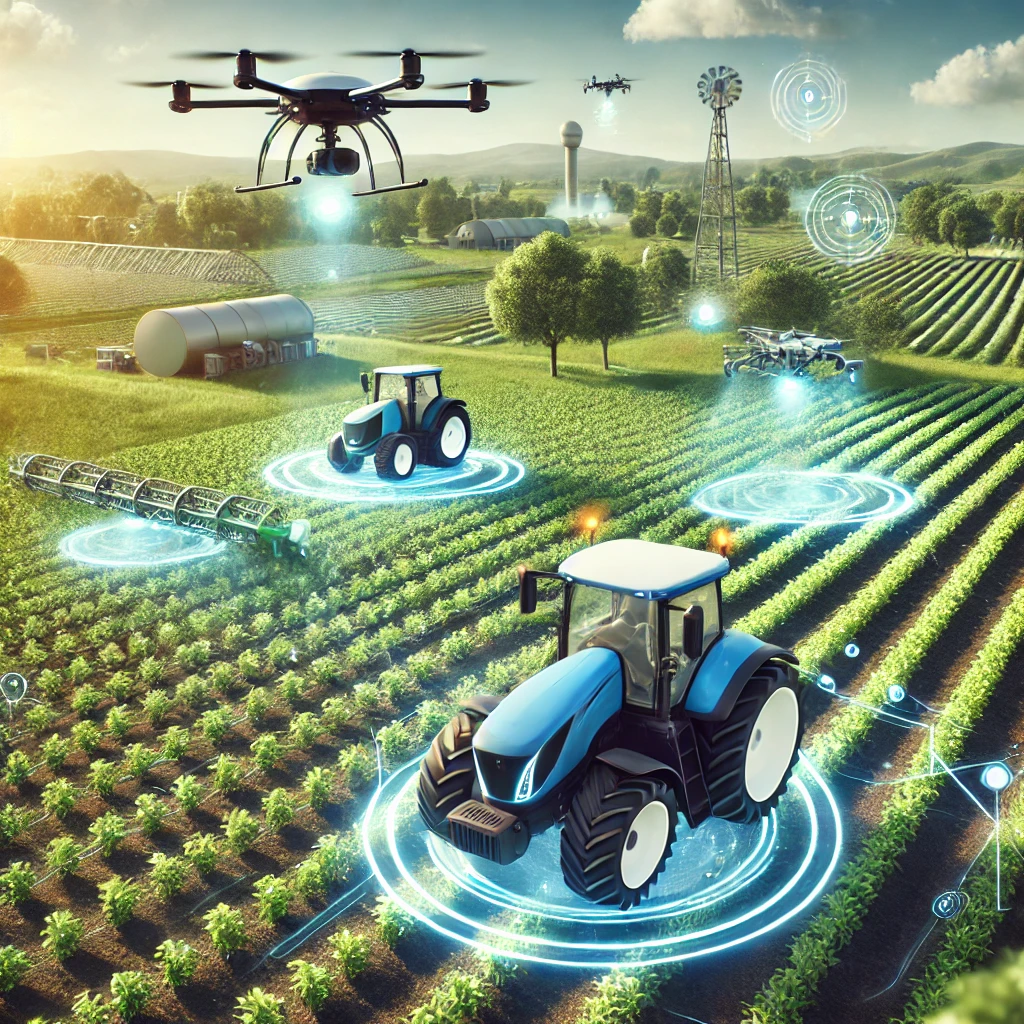
In recent years, technological advancements have transformed agricultural machinery, making farming more efficient, sustainable, and precise. These innovations are helping farmers overcome challenges like labor shortages, climate change, and the need to produce more food on limited land. Below are some of the most impactful technologies shaping the future of agricultural machinery.
1. Precision FarmingPrecision farming, also known as precision agriculture, involves using data and technology to optimize farming practices. This approach reduces waste and increases efficiency by applying resources like water, fertilizers, and pesticides only where and when they are needed.
- Drones: Agricultural drones are used to monitor crops, assess field conditions, and even apply fertilizers or pesticides in targeted areas. Equipped with sensors and cameras, drones provide real-time data on crop health, soil moisture levels, and plant growth. This enables farmers to make informed decisions about irrigation, fertilization, and pest control.
- GPS and Sensors: GPS technology allows farmers to create precise maps of their fields, showing variations in soil quality, crop yields, and other factors. This data, combined with sensors placed in the soil or on machinery, enables farmers to plant seeds, apply water, and spread fertilizers more efficiently. For example, variable rate technology (VRT) adjusts the amount of inputs applied across different parts of a field, optimizing resource use and improving yields.
Automation is revolutionizing the way farming is done, with autonomous machinery capable of performing tasks with minimal human intervention. These machines rely on AI, sensors, and GPS to navigate fields and carry out specific tasks such as plowing, planting, and harvesting.
- Autonomous Tractors: These driverless tractors can follow predetermined routes, ensuring that tasks like tilling or planting are completed with precision. Autonomous tractors are particularly useful for large farms where labor is scarce or expensive. They can work continuously, regardless of weather or time of day, reducing downtime and increasing productivity.
- AI-Powered Robots: Robots equipped with AI are being developed to perform a variety of tasks, from planting seeds to harvesting crops. For instance, some robots can identify and pick ripe fruits and vegetables without damaging them. AI systems can also analyze crop health and detect pests or diseases early, allowing for timely intervention and reducing crop loss.
Water management is a critical aspect of farming, especially in regions prone to drought or irregular rainfall. Smart irrigation systems use sensors, weather data, and automated controls to deliver the right amount of water to crops at the right time.
- Soil Moisture Sensors: These sensors monitor the moisture content in the soil, ensuring that crops receive water only when necessary. By avoiding over- or under-watering, smart irrigation systems help conserve water and improve crop health.
- Automated Irrigation Systems: Linked to weather forecasts and soil data, automated systems can adjust irrigation schedules based on real-time conditions. For example, if rain is expected, the system can delay watering, saving water and reducing costs.
Technological advances like these are not only improving the efficiency of farming operations but also making agriculture more sustainable. By using data and automation, farmers can reduce waste, improve yields, and minimize their environmental footprint. As these technologies continue to evolve, they will play a key role in addressing global food security and resource management challenges.
Challenges and Considerations
While agricultural machinery has brought immense benefits to farming, it also comes with challenges and considerations that need to be addressed for long-term sustainability and effectiveness. These challenges range from environmental concerns to economic factors and the adaptability of machinery for different farming scales.
1. Environmental ImpactAgricultural machinery, particularly large, fuel-powered equipment, can have significant environmental effects:
- Energy Consumption and Emissions: Many machines, especially tractors and harvesters, run on fossil fuels like diesel. This leads to carbon emissions that contribute to climate change. Additionally, the energy required to manufacture and operate this machinery adds to the carbon footprint of modern farming.
- Soil Degradation: The weight and repetitive use of heavy machinery can cause soil compaction, which reduces water infiltration and air circulation in the soil. Compacted soil is less productive, as it limits root growth and negatively affects plant health.
- Sustainable Practices: To mitigate these effects, there is a growing focus on developing more sustainable technologies, such as electric-powered machinery, fuel-efficient engines, and smaller, lighter equipment that reduces soil impact.
Agricultural machinery represents a major investment for farmers, and the financial burden can be significant, especially for small- and medium-sized farms.
- High Initial Costs: The upfront cost of purchasing advanced machinery like GPS-guided tractors, drones, and automated harvesters can be prohibitive for many farmers. Even leasing or renting machinery may not be affordable for small-scale farms.
- Maintenance and Repairs: Machinery requires regular maintenance to keep it functioning effectively. Breakdowns can lead to costly repairs and delays in critical farming operations, like planting or harvesting. Spare parts and technical expertise are often necessary, adding to the overall cost of ownership.
- Depreciation: Machinery also depreciates over time, meaning that its value decreases as it ages, potentially leading to reduced resale value or higher replacement costs.
While large commercial farms often have the resources to invest in and benefit from advanced agricultural machinery, smaller farms may face difficulties integrating such technologies:
- Scalability Issues: Many machines are designed for large fields and industrial-scale farming. Smallholders may not be able to use or justify the cost of this equipment on their smaller plots of land. However, efforts are being made to develop smaller, more affordable machines tailored to small-scale farming operations.
- Access to Technology: In some regions, especially in developing countries, farmers may not have access to the latest machinery due to poor infrastructure, lack of financial resources, or limited technical support. This can widen the gap between large, mechanized farms and smaller, manual operations.
Addressing these challenges requires a focus on innovation, cost-sharing models, and policies that support sustainable and inclusive technology adoption. By developing more eco-friendly machinery, offering flexible financial solutions, and creating equipment suitable for farms of all sizes, the agricultural sector can continue to evolve while minimizing the negative impacts.
As technology advances, the future of farming lies in precision agriculture, automation, and sustainable practices. These innovations allow farmers to optimize resource use, reduce environmental impact, and meet the challenges of feeding a growing population. However, it’s essential to balance the benefits of machinery with considerations such as environmental sustainability, cost-effectiveness, and ensuring that smaller farms can also access and benefit from these technological advancements.
Modern irrigation technology offers numerous benefits that enhance agricultural productivity, sustainability, and resource management. Here are some key advantages:
1. Water Conservation- Efficient Use: Modern systems, such as drip and sprinkler irrigation, apply water directly to the plant roots, minimizing evaporation and runoff.
- Reduced Waste: Precision irrigation techniques ensure that water is used only where and when needed, significantly reducing water waste.
- Optimal Water Supply: By providing the right amount of water at the right time, modern irrigation increases crop growth and yields.
- Consistency: Irrigation technology allows for consistent watering, which is crucial for maintaining healthy crops and maximizing production.
- Adaptation to Climate Change: Advanced irrigation systems can help farmers adapt to changing weather patterns and prolonged droughts by efficiently managing limited water resources.
- Storage Solutions: Technologies such as rainwater harvesting and water storage systems enable farmers to collect and store water during rainy seasons for use during dry periods.
- Reduced Erosion: Modern irrigation practices minimize soil erosion by reducing runoff and maintaining soil moisture.
- Nutrient Management: Systems like drip irrigation can be combined with fertigation (applying fertilizers through the irrigation system), allowing for better nutrient distribution and reduced leaching.
- Automation: Automated irrigation systems can be programmed to operate on schedules, reducing the need for manual labor and allowing farmers to focus on other important tasks.
- Remote Monitoring: Advanced technologies, such as sensors and smart irrigation controllers, enable farmers to monitor soil moisture levels and manage irrigation remotely, optimizing labor resources.
- Reduced Water Costs: Efficient irrigation methods lower water bills and operational costs, particularly in areas where water is expensive or scarce.
- Lower Energy Consumption: Drip and low-pressure systems can reduce energy costs associated with pumping water.
- Uniform Growth: Consistent watering leads to more uniform crop growth, which can improve the overall quality of the produce.
- Reduced Disease Risk: Proper irrigation management can help prevent water stress and associated plant diseases, leading to healthier crops.
- Sustainable Practices: Modern irrigation techniques promote sustainable agricultural practices by reducing the environmental impact of water extraction and usage.
- Biodiversity Preservation: Efficient irrigation can help maintain local ecosystems by reducing the diversion of natural water sources for agricultural use.
- Data-Driven Decisions: Modern irrigation systems can integrate with precision agriculture technologies, allowing for real-time monitoring and data analysis to optimize water use and improve decision-making.
- Adaptable Systems: Modern irrigation technologies can be scaled to fit various farm sizes, making them suitable for both smallholder and large commercial farms.
In summary, modern irrigation technology plays a crucial role in enhancing agricultural efficiency, sustainability, and resilience, benefiting farmers, the environment, and global food security.
Modern irrigation technologies offer numerous benefits that extend beyond water savings, impacting crop yields, environmental sustainability, and farm efficiency. For agriculture engineers, whether students or experienced professionals, understanding these advantages is essential for promoting and implementing these systems in real-world agricultural settings.
Water Savings
One of the most significant benefits of modern irrigation systems is their ability to conserve water. Traditional irrigation methods can waste up to 50% of water due to evaporation, runoff, and inefficient application. In contrast, technologies like drip irrigation and smart sensors ensure that water is applied precisely where and when it’s needed, reducing waste by as much as 30-60%. This is especially crucial in areas facing water shortages or in regions with unpredictable rainfall patterns. For engineers, designing systems that maximize water efficiency is key to sustainable agriculture.
Increased Crop Yields
By delivering water in a controlled and timely manner, modern irrigation systems directly enhance crop health and productivity. Drip irrigation, for instance, allows for consistent moisture levels at the root zone, promoting steady growth and improving yields by up to 40% in some crops. Smart systems that adjust irrigation based on real-time data also help avoid plant stress caused by over- or under-watering. Agriculture engineers can leverage these benefits to develop irrigation solutions that not only save water but also significantly increase agricultural output.
Reduced Environmental Impact
Modern irrigation systems play a critical role in reducing the environmental footprint of farming. Efficient water use helps prevent soil erosion, salinization, and nutrient leaching, all of which can degrade land quality over time. Furthermore, technologies that minimize energy consumption in pumping and distributing water contribute to lower greenhouse gas emissions. For professionals designing eco-friendly farming systems, these benefits are increasingly important as the agricultural sector moves toward more sustainable practices.
While modern irrigation technologies offer immense potential, their widespread adoption faces several challenges. However, these challenges also present valuable opportunities for both agriculture engineering students and professionals to innovate, overcome barriers, and advance the field.
ChallengesOne of the main challenges in implementing modern irrigation systems is the high upfront cost of technology. Systems such as drip irrigation or advanced sensor networks require significant initial investments, which can be a deterrent for small-scale farmers. Additionally, there is often a lack of technical expertise among farmers and laborers to operate and maintain these sophisticated systems, particularly in developing regions. Engineers must address these gaps by designing cost-effective solutions and providing training and support for system management.
Another challenge is infrastructure limitations in rural areas, where reliable access to electricity, internet, or water sources may be insufficient to support smart irrigation systems. Overcoming these barriers will require engineers to innovate with off-grid solutions, solar-powered pumps, or decentralized water systems to ensure technology can be applied in diverse settings.
OpportunitiesDespite these challenges, the rise of modern irrigation technology presents significant career and innovation opportunities for agriculture engineers. As demand for sustainable water management solutions grows, there is a rising need for professionals who can design, implement, and manage these advanced systems. Engineers can specialize in areas such as precision agriculture, integrating technologies like AI, IoT, and automation to enhance irrigation efficiency.
Furthermore, there are increasing government incentives and funding for projects that focus on water conservation and sustainable farming practices. Engineers can collaborate with governmental and international organizations to create scalable solutions that address the water scarcity crisis. By focusing on the opportunities to innovate, future engineers can play a pivotal role in transforming agricultural practices worldwide, ensuring that farming becomes more productive, sustainable, and resilient to climate challenges.
Modern irrigation systems represent a critical innovation in the future of agriculture, offering solutions to some of the industry's most pressing challenges, such as water scarcity, declining crop yields, and environmental degradation. For agriculture engineering students and professionals, mastering these technologies is not just an academic exercise—it’s essential for driving sustainable agricultural practices in the real world. Whether through the use of sensors, AI, or precision irrigation methods, engineers are uniquely positioned to revolutionize water management in farming, ensuring higher productivity with fewer resources.
As the global demand for food continues to rise, so too does the importance of efficient irrigation systems. By embracing and advancing these technologies, agricultural engineers can play a leading role in shaping the future of farming, making it more resilient, sustainable, and productive. The future of agriculture depends on today’s engineers to develop solutions that will meet the needs of tomorrow’s world.
The Overlooked Necessity: How Engineering in Some Fields Has Fallen Behind Despite the Urgent Need for Innovation
This article is a continuation of following article Engineering fields where innovation is urgently needed but often overlooked: Engineering fields where Need For Innovation Indeed
In an age where technological innovation drives global progress, engineering has played a pivotal role in transforming industries, economies, and even societies. Yet, despite the apparent necessity, certain branches of engineering remain overlooked, leaving gaps in fields that desperately need advancement. This article explores why engineering has been missed in some faculties and how this neglect has hindered essential innovation, even in industries that stand to benefit most.
1. The Critical Role of Engineering in Innovation
Engineering, by nature, is the backbone of problem-solving in modern society. Engineers design, optimize, and innovate the tools and systems that make daily life efficient and sustainable. Whether it’s in healthcare, transportation, manufacturing, or renewable energy, engineering innovations bring about radical improvements.
However, while sectors like aerospace, IT, and biomedical engineering have seen enormous advances, other critical fields have lagged behind. The reasons for this are multi-faceted, and understanding them requires a deep dive into the factors that drive engineering development—or impede it.
2. Underfunding and Resource Allocation Issues
One of the primary reasons engineering in certain faculties has been missed is due to the uneven distribution of resources and funding. Fields like artificial intelligence, robotics, and computer science tend to attract more funding from both governments and private investors due to their high visibility and profit potential. On the other hand, critical yet less glamorous fields like civil infrastructure, environmental engineering, or agricultural technology often receive fewer resources, despite their profound societal impact.
For example, in many parts of the world, infrastructure is crumbling under the weight of time and environmental stressors, yet civil engineering faculties have not seen the same level of financial investment as the tech industry. This creates a paradox where the fields in dire need of innovation are often starved of the resources to facilitate that innovation.
3. Lack of Cross-Disciplinary Collaboration
Another reason for the neglect is the growing compartmentalization of engineering disciplines. Innovation in fields like sustainable agriculture or environmental conservation requires collaboration between environmental scientists, civil engineers, and even software engineers to create smart systems. Unfortunately, traditional academic structures often silo these faculties, making cross-disciplinary innovation more challenging.
For example, agricultural engineering—an essential field to solve global food insecurity and environmental degradation—requires knowledge from both biological sciences and mechanical engineering. However, limited collaboration across these disciplines can slow the development of effective technologies.
4. Perception and Prestige Bias
Prestige plays a significant role in driving students and funding toward certain fields. Engineering faculties associated with cutting-edge technology, like AI or nanotechnology, are often seen as more prestigious or exciting, attracting the brightest minds and most significant funding. Fields like chemical engineering, civil engineering, or even mining engineering can sometimes be perceived as outdated or less exciting, even though they are critical to solving large-scale global challenges like resource depletion, climate change, and infrastructure development.
This perception bias can create a feedback loop where less innovation occurs because fewer minds and resources are focused on the problem, further entrenching the perception that the field is stagnating.
5. Societal and Political Influences
In some cases, societal or political factors hinder engineering progress in critical fields. For example, environmental engineering, which is crucial in addressing climate change, often faces political and public resistance. Climate policies that support innovation in renewable energy, sustainable construction, or waste management can be hampered by short-term political and economic interests. Similarly, public infrastructures like roads, bridges, and public transport systems tend to suffer from underinvestment due to political cycles that prioritize more immediate, visible gains over long-term planning.
This misalignment between societal needs and political agendas can leave essential engineering faculties starved of the attention they deserve.
6. Consequences of Missed Innovation
The neglect of engineering in some faculties has had tangible consequences. For example, inadequate infrastructure and outdated water management systems in many developing nations exacerbate issues like urban flooding, water scarcity, and pollution. Meanwhile, the absence of advanced agricultural engineering in regions facing food insecurity prevents the development of innovative farming technologies that could revolutionize crop yields and resource use.
In healthcare, the missed opportunity in fields like biomedical and biomechanical engineering in certain regions means that affordable, cutting-edge medical devices and technologies remain inaccessible to many populations, even though the need for such innovation is pressing.
7. Strategies for Addressing the Gap
Addressing the gaps in overlooked engineering faculties requires a multifaceted approach:
Balanced Funding Allocation: Governments, private investors, and educational institutions must reassess funding models to ensure that underfunded but critical faculties receive appropriate financial resources. Public investment in infrastructure, for instance, should be aligned with long-term sustainability and innovation.
Encouraging Cross-Disciplinary Work: Universities should promote collaboration between engineering faculties and other scientific fields. Cross-disciplinary research centers can help facilitate the innovation needed to address complex, global challenges.
Rethinking Engineering Education: Schools and universities should reframe how they present less glamorous fields of engineering, emphasizing their critical importance and the exciting potential for real-world impact. This shift could help attract more students to fields that need innovation the most.
Policy Alignment: Policymakers must align public funding and policy incentives with long-term infrastructural and environmental goals. Prioritizing investments in sustainable development, for instance, would ensure that engineering innovations in these fields receive the support they need.
In conclusion, while engineering has fueled much of the technological progress of the modern world, critical faculties have been overlooked, even though innovation in those fields is desperately needed. From civil infrastructure to agricultural technology, missed opportunities have led to stagnation in some areas, despite the increasing urgency of the challenges these fields face.
As we move forward, balanced resource allocation, cross-disciplinary collaboration, and societal recognition of the value of these fields will be essential to ensuring that engineering can meet the diverse and pressing needs of the 21st century. Without this attention, we risk not only falling behind in innovation but also failing to solve the global challenges that will shape our future.
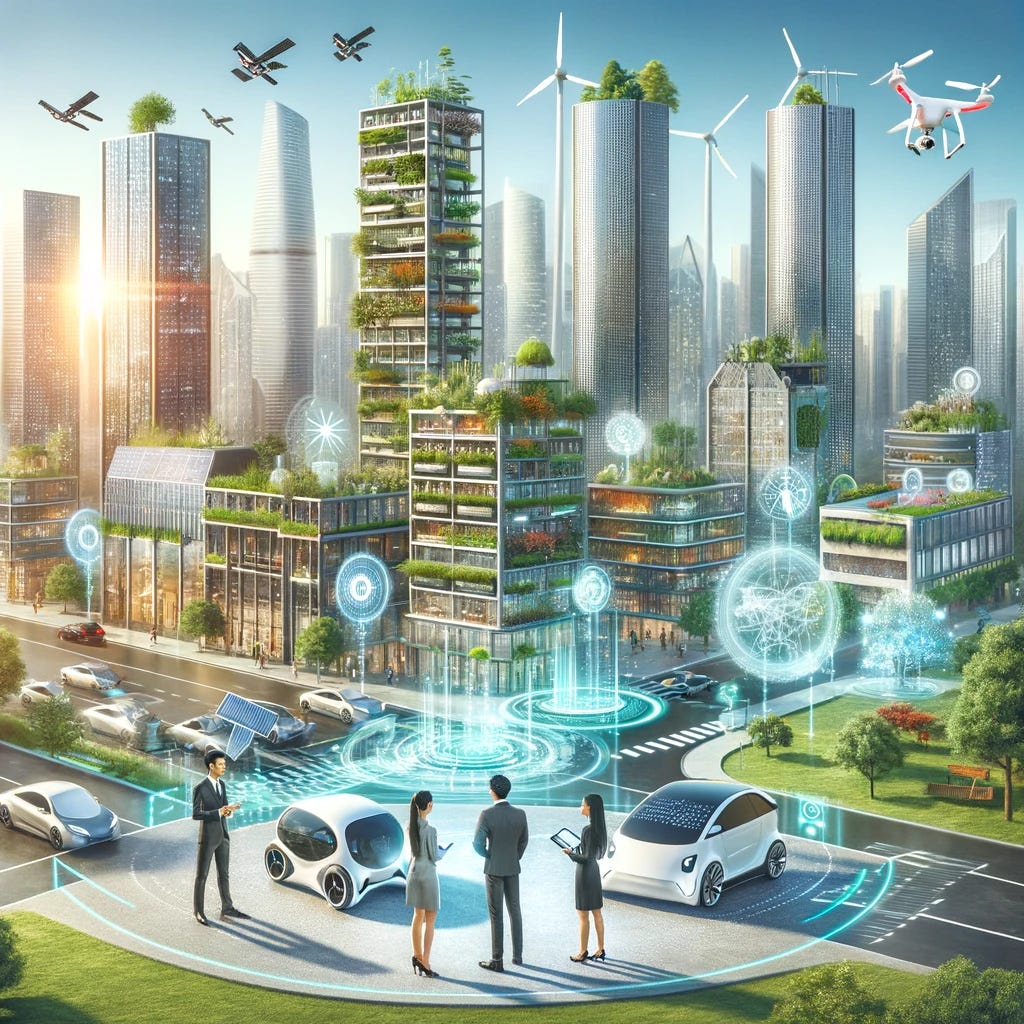
Humanity stands at a crossroads. As individuals, our choices not only define our own lives but also shape the future of our planet and society. In an increasingly digital, fast-paced, and environmentally challenged world, the responsibility for a better future lies not with governments or corporations alone, but with each of us.
To create a sustainable and advanced civilization that fosters happiness, peace, and longevity, each individual must adopt a lifestyle that nurtures the environment, embraces technological advancements mindfully, and contributes positively to the well-being of society. This article explores how a person can live harmoniously with nature, minimize their ecological footprint, and play an active role in advancing human civilization—all while leading a fulfilling, peaceful life.

As an individual, the choices we make in our everyday lives—whether in how we consume, travel, or even eat—have far-reaching effects. Living sustainably is about more than just reducing waste; it's about adopting practices that align with the long-term health of the planet.
The Problem: Overconsumption and Environmental DegradationOne of the largest contributors to environmental degradation is the modern tendency toward overconsumption. The demand for more products, more energy, and more convenience leads to excessive waste, resource depletion, and pollution. Every item we purchase, every meal we eat, and every trip we take has an ecological cost.
A typical consumer lifestyle involves heavy use of non-renewable resources and reliance on disposable products. The rise in global temperatures, deforestation, and loss of biodiversity are largely the result of unchecked consumption and poor resource management on a personal level.
The Solution: Conscious Consumption and MinimalismTo contribute to a sustainable future, individuals need to adopt conscious consumption practices. This begins with minimalism—owning only what is necessary and valuing quality over quantity. Instead of accumulating possessions, individuals can focus on acquiring durable, repairable items that last longer and have less impact on the environment.
For instance, buying clothes made from sustainable, organic fabrics and reducing reliance on fast fashion can significantly decrease textile waste. The “buy less, choose well” philosophy advocated by designer Vivienne Westwood promotes responsible purchasing habits, urging people to buy higher-quality goods that are built to last.
In terms of daily consumption, reducing waste is key. Small actions like carrying a reusable water bottle, avoiding single-use plastics, and composting organic waste can collectively make a massive difference. These practices not only cut down on landfill waste but also reduce the demand for the extraction of new raw materials, which depletes the Earth’s natural resources.
The Problem: Energy Consumption and Carbon FootprintModern lifestyles rely heavily on energy, much of which is sourced from non-renewable, polluting fossil fuels. The carbon emissions generated from personal energy use—whether through home heating, cooling, or transportation—are among the leading causes of climate change.
The Solution: Energy Efficiency and Renewable PowerAs individuals, we have the power to drastically reduce our energy consumption and switch to cleaner alternatives. For example, installing energy-efficient appliances and using LED lighting in the home can cut electricity use by up to 75%. Simple habits like turning off lights, unplugging devices when not in use, and setting thermostats mindfully can also reduce unnecessary energy waste.
If possible, switching to renewable energy sources like solar power at home is a game-changer. Solar panels are now more affordable than ever and can allow individuals to generate their own clean electricity. Countries like Australia are seeing a rise in individuals installing solar panels on rooftops, making their homes energy-independent and carbon-neutral.
For transportation, opting for electric vehicles or cycling and walking instead of driving can drastically lower one’s carbon footprint. Norway has set a powerful example, with 80% of its new cars being electric, but on an individual level, even carpooling or using public transport can be impactful in reducing emissions.
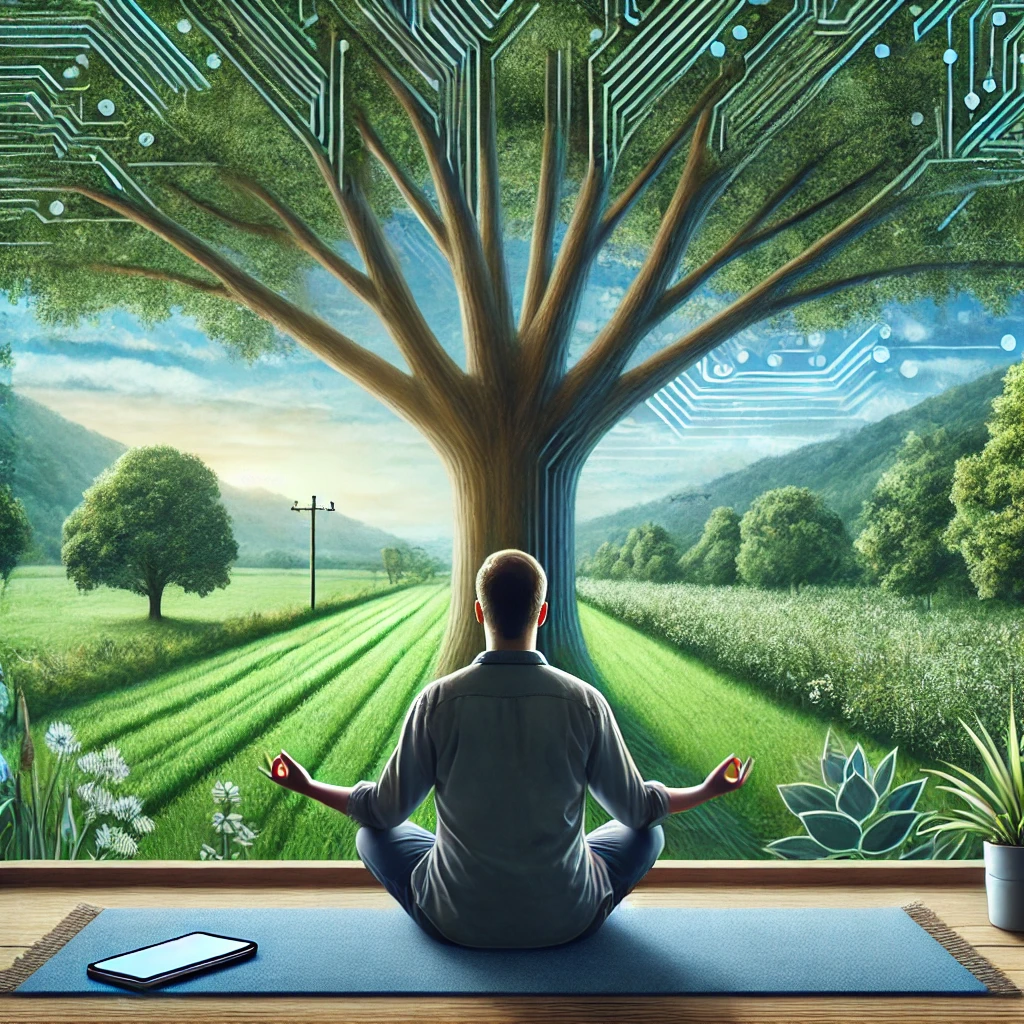
Living sustainably isn’t just about how we interact with the external world. It also involves how we care for our mental and emotional health. A mindful lifestyle is essential for cultivating inner peace, which directly influences our interactions with others and the environment.
The Problem: Stress, Distraction, and Disconnection from NatureMany people in today’s world feel overwhelmed by work pressures, technology, and constant connectivity. The fast pace of life often leads to burnout, chronic stress, and a sense of disconnection from the natural world. When individuals are stressed or distracted, they tend to make unsustainable choices—choosing convenience over consciousness, opting for disposable goods, and overlooking the long-term impact of their actions.
The Solution: Practicing Mindfulness and Finding BalanceMindfulness is a personal practice that involves paying attention to the present moment without judgment. It helps individuals cultivate self-awareness, reduce stress, and make more deliberate choices in all areas of life. By practicing mindfulness, one can become more attuned to the impact of their actions, making it easier to adopt sustainable habits.
Meditation is a powerful tool for developing mindfulness. A regular meditation practice allows individuals to step back from their busy lives, reflect, and connect more deeply with themselves. This clarity enables people to focus on what truly matters—both personally and in relation to the environment.
For example, starting the day with a 10-minute mindfulness practice can set a calmer, more focused tone, helping people become more intentional in their choices. Apps like Headspace and Insight Timer offer guided meditation sessions specifically tailored to reducing stress, improving focus, and enhancing well-being.
The Problem: Over-Reliance on Technology and Screen TimeWhile technology has enabled incredible advances, overuse of devices can lead to mental exhaustion and disconnection from the physical world. People are spending more time on screens and less time outdoors, which is contributing to health issues like digital fatigue, sleep disturbances, and even anxiety.
The Solution: Digital Mindfulness and Nature ImmersionTo counteract the negative effects of technology, individuals can practice digital mindfulness—being conscious of how they use technology and creating boundaries. For instance, setting time limits for social media, turning off notifications, and scheduling regular "screen-free" hours can improve mental clarity and emotional well-being.
Another powerful solution is to spend more time in nature. Numerous studies show that being in natural environments reduces stress and boosts mental health. Forest bathing, a Japanese practice known as Shinrin-yoku, involves immersing oneself in nature and experiencing its calming, restorative effects. By making it a habit to walk in the park, hike, or even simply sit in a garden, individuals can reconnect with the natural world and experience greater well-being.
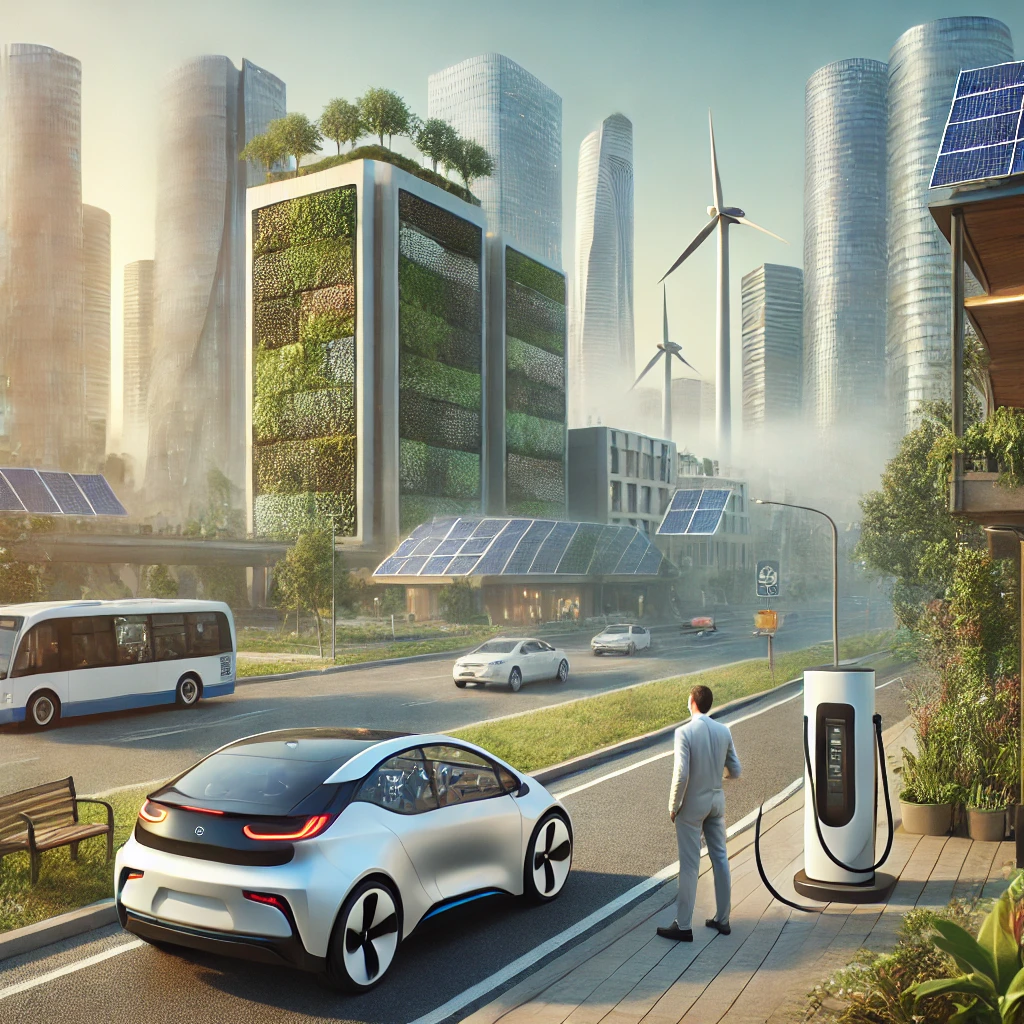
A pollution-free environment is crucial for the long-term health of our planet and future generations. While systemic changes are necessary, individuals can make impactful contributions by leveraging the power of modern technology. From the way we power our homes to the transportation choices we make, technology provides us with tools to live in ways that are cleaner, smarter, and more sustainable.
The Problem: Air and Water PollutionOne of the most pervasive environmental issues is pollution, particularly air and water contamination. Fossil fuel-based energy, industrial emissions, and vehicle exhausts contribute to poor air quality, leading to respiratory problems and premature deaths. Similarly, water pollution from plastic waste, toxic chemicals, and agricultural runoff threatens aquatic ecosystems and human health.
The Solution: Adopting Clean Energy TechnologiesIndividuals have the power to combat pollution by embracing clean energy technologies in their homes and personal lives. Solar panels and wind turbines are becoming increasingly accessible to homeowners, offering an effective way to generate renewable electricity. By installing solar panels on a rooftop, a household can reduce its dependence on the grid and significantly cut its carbon emissions.
If solar installation isn’t feasible, individuals can opt for green energy plans offered by utility companies. Many providers now offer electricity sourced entirely from renewable sources like wind or solar farms. Switching to these plans is a simple yet powerful step toward reducing one’s personal carbon footprint.
In terms of transportation, electric vehicles (EVs) offer a clean alternative to traditional gas-powered cars, which are major contributors to air pollution. Brands like Tesla, Nissan, and Chevrolet have made electric cars more affordable and accessible, with charging infrastructure rapidly expanding. Individuals who can’t switch to EVs immediately can still reduce their transportation-related pollution by carpooling, using public transit, or opting for biking and walking when possible.
The Problem: Plastic Waste and Environmental ContaminationPlastic waste is one of the most visible and troubling forms of pollution. Over 300 million tons of plastic are produced each year, much of which ends up in oceans, landfills, or incinerators, releasing harmful toxins into the environment. Single-use plastics, such as bottles, bags, and straws, are a major part of the problem.
The Solution: Reducing Plastic Use with TechnologyTo address plastic pollution, individuals can turn to innovative products and technologies that minimize or eliminate the need for single-use plastics. For example, reusable water bottles made from stainless steel or glass are increasingly popular, helping to reduce the demand for plastic bottles. Smart water purifiers installed at home can provide clean drinking water, eliminating the need for bottled water entirely.
For household goods, companies like Blueland offer cleaning products in tablet form, designed to be mixed with water in reusable containers. These products reduce plastic waste while also minimizing shipping-related emissions due to their compact packaging.
For food storage, beeswax wraps are a sustainable alternative to plastic cling film, while products like Stasher bags offer reusable silicone bags for storing food items. These small changes in individual habits can significantly reduce the amount of plastic waste generated daily.
Technology also offers recycling solutions. Apps like iRecycle help individuals find local recycling centers that accept items like electronics, glass, and hazardous materials, ensuring that these materials are disposed of properly rather than contributing to pollution.
The Problem: Industrial and Agricultural PollutionThough individuals may not directly contribute to large-scale industrial pollution, the products we consume daily—food, clothing, and electronics—often come from industries that heavily pollute the environment. Intensive farming practices, for example, rely on harmful pesticides and fertilizers that contaminate water sources and damage ecosystems.
The Solution: Supporting Sustainable InnovationsIndividuals can combat industrial pollution by making more sustainable purchasing decisions. Supporting companies that prioritize green manufacturing and ethical sourcing can drive demand for cleaner production methods. Apple and Dell, for instance, are working to reduce the environmental impact of their electronics by using recycled materials and designing products for longer life cycles.
In terms of food consumption, individuals can opt for products from organic farms that avoid chemical pesticides and fertilizers, or choose plant-based diets, which have a lower environmental impact than meat-heavy diets. Plant-based food alternatives, like those from Beyond Meat and Impossible Foods, allow people to enjoy the same flavors as meat while reducing the greenhouse gas emissions associated with livestock farming.
For home gardening enthusiasts, using composters and smart irrigation systems reduces waste and conserves water, helping create pollution-free environments on a personal level. Composting food scraps at home returns nutrients to the soil, reducing the need for chemical fertilizers.
The Problem: E-Waste and Hazardous MaterialsWith rapid technological advancement comes the issue of electronic waste (e-waste). Smartphones, laptops, and other electronics often have short life cycles, leading to a significant amount of e-waste, which contains hazardous materials like lead, mercury, and cadmium. When improperly disposed of, these materials can leach into the soil and water, causing serious environmental damage.
The Solution: Extending Device Lifecycles and RecyclingAs individuals, one of the most impactful ways to reduce e-waste is by extending the lifecycle of electronic devices. Instead of upgrading to the latest smartphone or laptop every year, individuals can make use of their current devices for longer periods by ensuring proper care and repair. Right to Repair movements advocate for policies that allow individuals to repair their own electronics instead of discarding them for minor issues. Websites like iFixit provide guides and tools to help people repair their devices, extending their usability.
Recycling e-waste properly is also crucial. Many companies and local governments offer e-waste recycling programs that safely extract valuable metals and dispose of hazardous materials. By participating in these programs, individuals can prevent e-waste from ending up in landfills, where it can contaminate the environment.
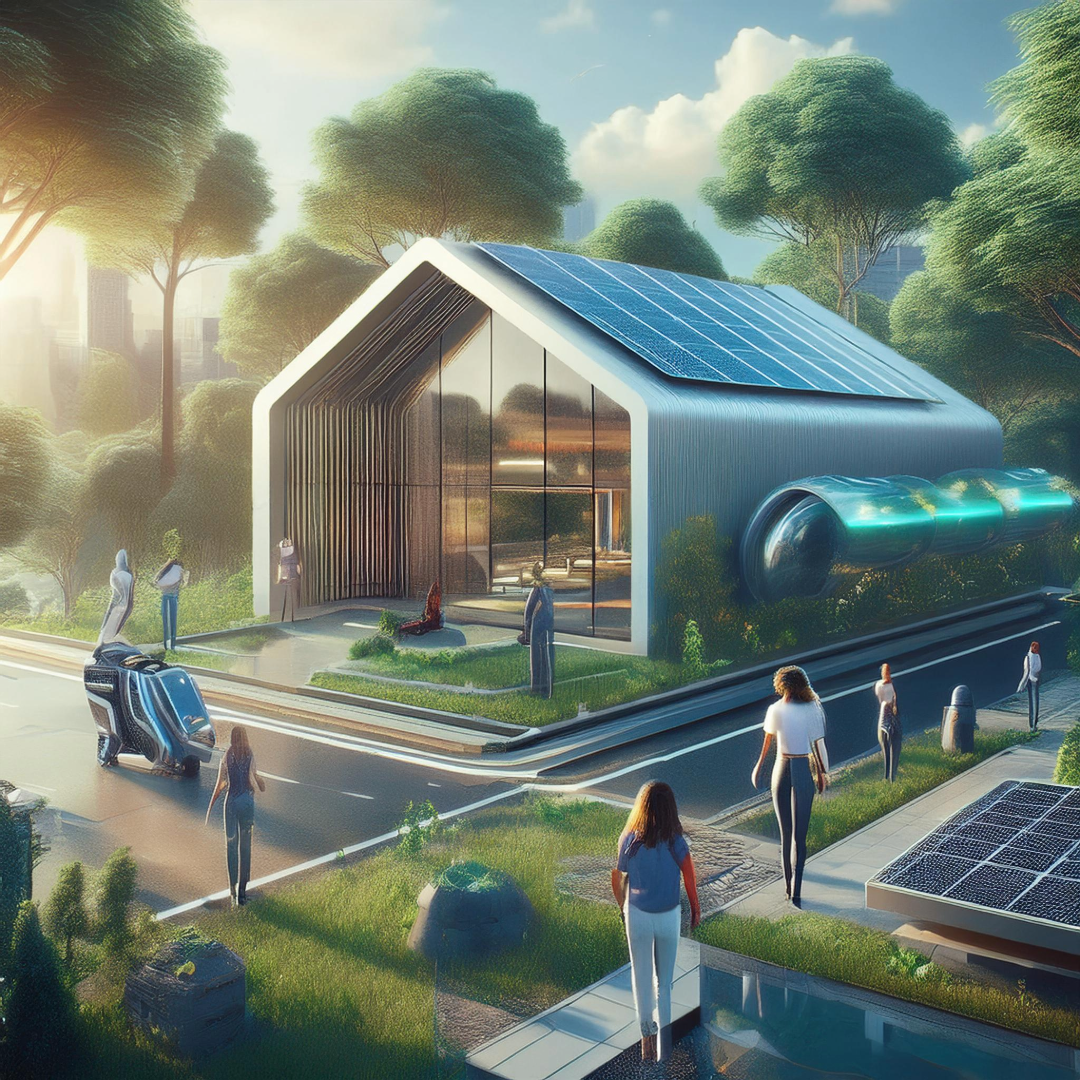
In the digital age, technology is not only shaping our world but also the way we live our daily lives. Individuals have the opportunity to leverage technology in a way that enhances both personal well-being and the collective advancement of society. The challenge lies in adopting technology mindfully—using it to promote well-being, creativity, and human connection without losing sight of our humanity.
The Problem: Over-Reliance on Technology and Social DisconnectWhile technology has improved efficiency and convenience, it has also contributed to a growing sense of isolation, reduced attention spans, and social disconnection. Screen addiction, excessive reliance on automation, and the decline in face-to-face interactions can have adverse effects on mental health and societal cohesion.
The Solution: Mindful Use of Technology and Digital BalanceIndividuals must learn to balance technology use with meaningful human experiences. For example, setting screen time limits and practicing digital mindfulness can prevent burnout and promote mental clarity. Apps like Moment track device usage, encouraging individuals to take regular breaks from screens and engage in real-world activities.
Technology can also be used to foster creativity and lifelong learning. Platforms like Coursera and edX allow individuals to learn new skills, ranging from programming to philosophy, without the limitations of geography or traditional educational systems. This not only enhances personal development but also contributes to the collective advancement of society by empowering individuals with knowledge and skills that can solve global challenges.
The Problem: Inequality in Access to TechnologyWhile technology has the potential to democratize access to resources and education, there is still a significant divide between those who have access to advanced technologies and those who do not. This digital divide exacerbates social and economic inequalities, particularly in developing regions.
The Solution: Supporting Ethical and Inclusive TechnologyAs individuals, we can support companies and organizations that prioritize ethics in tech development and strive to close the digital divide. Purchasing from companies that promote fair labor practices and contribute to social causes ensures that technological progress benefits all. Moreover, by advocating for policies that promote internet accessibility and education in technology, individuals can contribute to a more inclusive, equitable future.
.png)
In the pursuit of a sustainable future and technological advancement, it’s important that individuals do not lose sight of personal happiness, playfulness, and longevity. A balanced lifestyle that incorporates physical, mental, and emotional well-being can significantly contribute to an individual’s quality of life. Moreover, these elements help people maintain a positive and productive role in advancing society.
The Problem: Stress and Overwork as Barriers to HappinessIn today's fast-paced world, people often experience high levels of stress due to overwork, financial pressures, and societal expectations. Chronic stress is one of the leading causes of various health problems, including heart disease, mental health issues, and weakened immune systems. Stress not only reduces personal happiness but also negatively affects creativity, productivity, and one’s ability to contribute to society meaningfully.
The Solution: Incorporating Play and Leisure into Daily LifeOne of the most effective ways to counter stress is by embracing playfulness and leisure as essential parts of life. Research shows that engaging in creative play—whether through sports, arts, or hobbies—helps reduce stress and boosts mental well-being. Playfulness enhances problem-solving abilities, strengthens social bonds, and fosters a sense of joy and fulfillment.
As an individual, setting aside time each day for activities purely for enjoyment—such as painting, playing a musical instrument, or taking part in sports—can elevate mood and improve long-term mental health. Physical play in particular, such as dancing, hiking, or team sports, not only enhances physical health but also strengthens community ties.
Incorporating play into work life can also lead to increased job satisfaction and better performance. Companies like Google and Airbnb have adopted playful elements in the workplace, offering employees recreational spaces where they can unwind, brainstorm, and reconnect with their creativity.
The Problem: Sedentary Lifestyles and Lack of Physical HealthThe rise of technology has made life more convenient but also more sedentary. Many individuals spend hours sitting in front of screens, leading to poor posture, weakened cardiovascular health, and a lack of physical vitality. Sedentary lifestyles, coupled with poor dietary choices, contribute to rising rates of obesity, diabetes, and other chronic health conditions.
The Solution: Prioritizing Physical Health for LongevityMaintaining an active lifestyle is essential for longevity and overall well-being. Regular exercise—whether it's walking, yoga, cycling, or swimming—has been shown to extend life expectancy, reduce the risk of chronic disease, and improve mental clarity. For those working in tech-heavy or sedentary jobs, simple habits like standing desks, stretching routines, and periodic movement breaks can mitigate the negative effects of prolonged sitting.
Diet also plays a crucial role in supporting longevity. By choosing a plant-based or Mediterranean diet, rich in fruits, vegetables, whole grains, and healthy fats, individuals can promote heart health, reduce inflammation, and support cognitive function. These dietary choices not only benefit personal health but also contribute to environmental sustainability, as plant-based diets require fewer natural resources to produce compared to meat-heavy diets.
Blue Zones—regions of the world where people live exceptionally long and healthy lives—offer valuable insights into longevity. In places like Okinawa, Japan, and Sardinia, Italy, people prioritize physical activity, community involvement, plant-based diets, and mental well-being, demonstrating that a balanced lifestyle leads to both longevity and happiness.
The Problem: The Pursuit of Happiness in a Materialistic WorldMany people equate happiness with material success, leading them to accumulate possessions and wealth, often at the expense of environmental and personal well-being. This pursuit of external validation through material goods fosters a cycle of dissatisfaction and stress, as true happiness cannot be found in excess consumption.
The Solution: Finding Joy in Minimalism and Purposeful LivingTrue happiness and long-term contentment come from living a life aligned with one’s values, rather than accumulating material wealth. Minimalism encourages individuals to seek happiness in experiences, relationships, and personal growth rather than possessions. By simplifying their lives and reducing unnecessary consumption, individuals can find greater satisfaction and inner peace while contributing to the reduction of environmental strain.
Additionally, having a sense of purpose is essential for lasting happiness. Research shows that individuals who engage in purposeful activities—such as volunteering, pursuing creative projects, or mentoring others—report higher levels of life satisfaction and well-being. By dedicating time to causes that align with one’s values, individuals can make a meaningful impact on society while finding personal fulfillment.
Apps like Happify and Gratitude Journal encourage people to focus on the positive aspects of their lives, fostering an attitude of thankfulness and joy. Mindful practices such as gratitude exercises, journaling, and meditation help individuals find contentment in the present moment and resist the urge to chase materialistic goals.
.png)
The ideal lifestyle for individuals in a sustainable, mindful, and technologically advanced civilization involves more than just environmental consciousness or the use of cutting-edge technology. It requires a holistic approach that incorporates responsible consumption, mindfulness, playfulness, and personal well-being—all with an eye toward advancing human civilization and fostering peace and happiness.
By making small but impactful choices—opting for renewable energy, reducing plastic waste, embracing mindfulness, staying physically active, and finding joy in non-material pursuits—each person can significantly contribute to a pollution-free and sustainable future. A balanced life not only promotes personal happiness and longevity but also helps society thrive by fostering innovation, collaboration, and empathy.
Ultimately, the future of human civilization depends on the collective actions of individuals. Through intentional living, every person can play a role in creating a world where technology and nature exist in harmony, where progress does not come at the cost of the environment, and where the pursuit of peace and happiness drives human flourishing. This vision of an ideal lifestyle is not a distant utopia but a tangible reality, one that starts with each of us today.
In recent past years world have seen very fast paced engineering innovation how ever innovation happened into very particular engineering fields weather some very crucial engineering fields has been overlooked. here just some reference that i think overlooked Engineering fields where innovation is urgently needed but often overlooked with some examples and hypothesis.
- Missed Innovation Example: Aging infrastructure (roads, bridges, dams) in many developed and developing nations remains outdated and unsafe. Technologies for sustainable, earthquake-resistant buildings or smart urban infrastructure (integrated with IoT) are underdeveloped in many regions.
- Need for Innovation:
- Smart cities with energy-efficient, sustainable infrastructure.
- Green construction technologies that reduce the environmental impact of building materials.
- Resilient infrastructure to withstand climate change-induced challenges such as flooding and extreme weather.
- Consequences:
- Deteriorating infrastructure, leading to increased maintenance costs, accidents, and failures (e.g., bridge collapses, unsafe buildings).
- Inadequate urban planning results in traffic congestion, pollution, and poor living conditions.
- Lack of sustainable and resilient construction exacerbates the impact of natural disasters like earthquakes, floods, and hurricanes.
- Missed Innovation Example: Despite growing food insecurity, many areas lack investment in precision farming technologies, such as automated irrigation systems or drones for crop monitoring. Developing countries, in particular, have missed the opportunity to advance farming practices that could increase food production with limited resources.
- Need for Innovation:
- Automation in agriculture: robotics and AI-driven machines for planting, harvesting, and monitoring crops.
- Water-efficient farming: innovative irrigation technologies to maximize water usage in drought-prone areas.
- Climate-resilient agriculture: designing farming systems that can withstand changing weather patterns and environmental stressors.
- Consequences:
- Increased food insecurity and reduced agricultural productivity due to inefficient farming practices.
- Overuse of water and land resources leading to soil degradation, deforestation, and biodiversity loss.
- Vulnerability to climate change as farming systems are not equipped to handle changing weather patterns and environmental stresses.
- Missed Innovation Example: The management of wastewater and air pollution is still suboptimal in many urban areas, especially in developing countries. Technologies for efficient water recycling, waste-to-energy plants, or air purification systems have not been widely adopted, even though they are needed to fight pollution and climate change.
- Need for Innovation:
- Water treatment systems: advanced filtration and purification technologies to ensure clean water supplies.
- Sustainable waste management: converting waste into renewable energy sources or biodegradable materials.
- Air quality improvement: scalable technologies to reduce carbon emissions and particulate matter in urban environments.
- Consequences:
- Worsening pollution levels (water, air, and soil), leading to public health crises such as respiratory diseases and contaminated drinking water.
- Insufficient waste management leads to increased landfills, environmental degradation, and lost opportunities for recycling or energy recovery.
- Poor climate resilience exacerbates the effects of climate change, such as rising sea levels, extreme weather events, and global warming.
- Missed Innovation Example: Mining practices in many countries continue to rely on traditional, destructive methods that cause significant environmental harm. Technologies for more sustainable resource extraction, such as using bio-leaching or automated mining systems, have not been fully implemented.
- Need for Innovation:
- Sustainable mining: reduced environmental impact and more efficient resource extraction processes.
- Mineral recycling technologies: reclaiming valuable materials from industrial waste.
- Energy-efficient smelting and refining processes to reduce emissions and lower the energy consumption in metallurgical operations.
- Consequences:
- Unsustainable mining practices result in environmental destruction, including deforestation, water contamination, and habitat loss.
- Depletion of non-renewable resources without the development of more sustainable extraction or recycling technologies.
- Increased carbon emissions and energy waste in metallurgical processes due to outdated technologies.
- Missed Innovation Example: Public transportation systems in many cities remain outdated, underfunded, and inefficient. The integration of electric buses, autonomous vehicles, or hyperloop systems is still rare, even though these technologies could significantly reduce urban congestion and carbon emissions.
- Need for Innovation:
- Autonomous transport systems: self-driving cars and public transportation that reduces traffic accidents and increases efficiency.
- Electric and sustainable transportation: expansion of electric vehicle infrastructure (charging stations, smart grids) and the use of green energy in transportation networks.
- High-speed rail and hyperloop: developing rapid, sustainable intercity transportation systems.
- Consequences:
- Growing urban congestion and traffic-related air pollution, contributing to public health issues and economic losses.
- Increased reliance on fossil fuels due to inadequate development of electric and sustainable transportation systems, worsening climate change.
- Lack of effective public transportation results in social inequality, as low-income populations suffer from limited access to affordable transport.
- Missed Innovation Example: In many regions, especially in developing countries, water distribution systems are inefficient, leading to significant water loss through leaks. Additionally, technologies for drought management, such as large-scale water desalination or smart water grids, are still underdeveloped.
- Need for Innovation:
- Smart water management systems: sensors, AI, and IoT-based systems that optimize water distribution and reduce wastage.
- Desalination technologies: energy-efficient systems for converting seawater into freshwater.
- Flood prevention: designing advanced flood management systems to control and mitigate urban flooding caused by climate change.
- Consequences:
- Water scarcity and inefficient use of water resources, particularly in drought-prone regions, leading to social unrest and economic disruption.
- Urban flooding and poor stormwater management causing property damage, displacement, and increased mortality rates in vulnerable areas.
- Insufficient access to clean water, contributing to waterborne diseases and exacerbating public health challenges in developing regions.
- Missed Innovation Example: The textile industry is one of the most resource-intensive sectors, yet innovations in sustainable fabrics and environmentally friendly production processes are still limited. Fast fashion continues to contribute to significant waste and pollution.
- Need for Innovation:
- Eco-friendly textiles: developing biodegradable or recyclable fabrics that reduce environmental impact.
- Waterless dyeing technologies: reducing the massive water consumption and chemical use in fabric production.
- Circular textile economy: designing clothes that are easy to recycle or repurpose, reducing textile waste in landfills.
- Consequences:
- Massive environmental pollution due to toxic chemicals used in dyeing processes and large-scale textile waste from fast fashion.
- Over-exploitation of natural resources, such as water and cotton, leading to ecological degradation.
- Missed opportunities for a circular economy in the textile sector, contributing to a growing waste crisis as millions of tons of textiles are sent to landfills each year.
- Missed Innovation Example: In many regions, especially developing countries, there is a lack of affordable medical devices or prosthetics that are accessible to those in need. Technologies for low-cost, 3D-printed medical devices could revolutionize healthcare but remain underdeveloped in underserved markets.
- Need for Innovation:
- Affordable diagnostics: low-cost medical imaging and diagnostic devices for remote or low-income areas.
- Wearable health tech: biosensors and smart devices that monitor health conditions in real time.
- 3D-printed prosthetics and implants: affordable and customizable solutions for those who need prosthetic limbs or medical implants.
- Consequences:
- Lack of affordable, accessible medical technologies results in unequal access to healthcare, particularly in low-income regions.
- Missed opportunities to develop life-saving devices or treatments, such as affordable prosthetics or advanced diagnostic tools, which could improve quality of life.
- Overburdened healthcare systems, unable to cope with increasing demand for effective, low-cost medical solutions.
- Missed Innovation Example: The production of plastics and other petroleum-based chemicals remains largely unsustainable, contributing to massive environmental degradation. Innovations in biodegradable plastics or carbon capture technologies in chemical processes are still insufficiently developed.
- Need for Innovation:
- Green chemistry: developing sustainable processes for producing chemicals with minimal environmental impact.
- Carbon capture and utilization: technologies to capture CO₂ emissions from chemical plants and repurpose them.
- Biodegradable materials: alternatives to plastics and other harmful materials, reducing pollution and improving waste management.
- Consequences:
- Continued reliance on non-biodegradable plastics and harmful chemicals contributes to environmental degradation, particularly ocean pollution and microplastic accumulation.
- Higher levels of industrial emissions, leading to global warming and severe health impacts due to air pollution.
- Missed opportunities for developing sustainable chemical processes, hindering progress toward reducing the carbon footprint of industries.
- Missed Innovation Example: Although there is global recognition of the need for clean energy, many regions continue to rely on outdated, fossil-fuel-based energy systems. Innovations in energy storage, grid management, and renewable energy infrastructure are often underfunded or underdeveloped in critical areas.
- Need for Innovation:
- Energy storage solutions: efficient batteries and storage technologies to support renewable energy use.
- Smart grids: intelligent, flexible energy distribution systems to accommodate renewable sources like solar and wind.
- Sustainable energy generation: scaling up of renewable energy projects, especially in regions heavily dependent on coal or oil.
- Consequences:
- Continued dependence on fossil fuels results in worsening climate change, environmental degradation, and geopolitical conflicts over oil and gas resources.
- Energy poverty in remote or underdeveloped regions due to a lack of innovation in affordable and decentralized renewable energy systems.
- Unstable energy grids that cannot integrate renewable energy sources efficiently, leading to blackouts and unreliable energy supplies.
Overall Societal and Environmental Impact
- Economic stagnation: Missed engineering innovation leads to inefficiencies, higher costs, and lost economic opportunities in key industries such as agriculture, manufacturing, and energy.
- Social inequality: Uneven access to modern technologies and solutions disproportionately affects low-income populations, creating deeper societal divides.
- Environmental degradation: The lack of sustainable technologies exacerbates issues such as climate change, resource depletion, and biodiversity loss, threatening global ecosystems and the well-being of future generations.
By missing innovations in these critical engineering fields, society risks falling behind on addressing some of the most pressing challenges of our time, from food security and climate change to health access and sustainable infrastructure. These areas deserve greater attention, investment, and cross-disciplinary collaboration to drive the necessary changes.
if you are interested in possible cause and solution of this issue follow the link below for related article.

